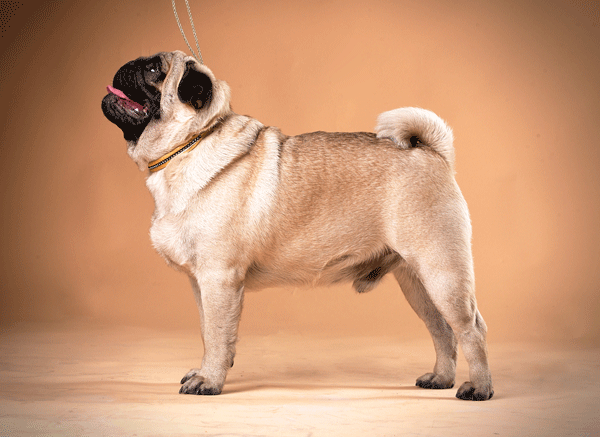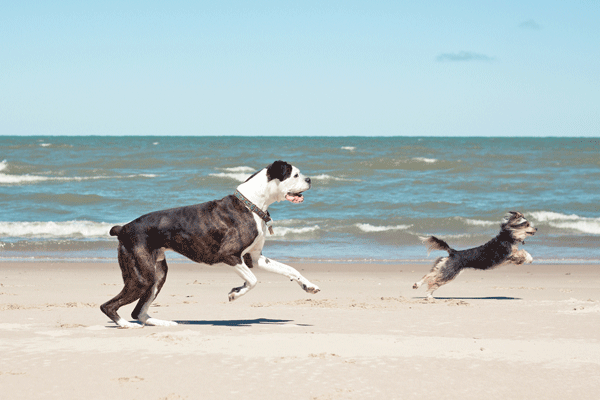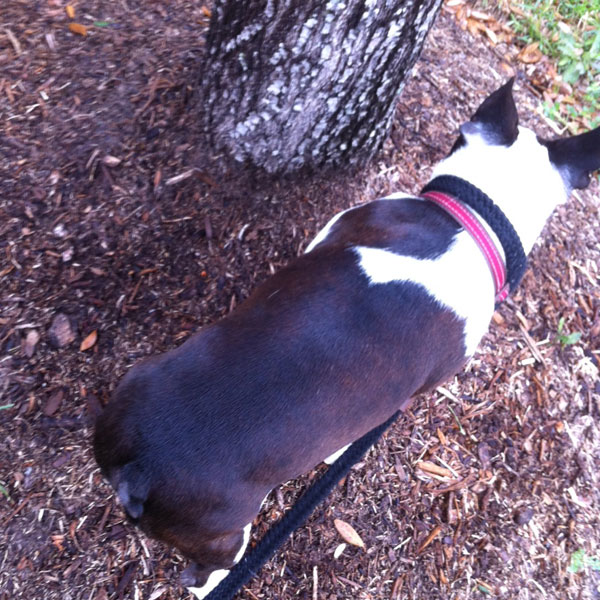Tail docking is not a new phenomenon; neither is opposition to it. In 1896, the Kennel Club in England debated a motion that would ban any docked dog from winning a prize at a dog show. Tail docking is prohibited in many countries. In Europe, some breeders are turning to dogs with natural bobtails in an attempt to keep that short-tail look without docking.
Will bobs catch on for all breeds?
Maybe. Several traditionally docked breeds also have individuals with natural bobtails. Early Pembroke Welsh Corgis, for example, had tails that were more short than long, the short ones ranging from short bobs to half-length terrier-type tails. The early Corgi standard requested “tail short.”
But what of breeds in which no natural bobs exist? Boxers, for example. In 1992, Dr. Bruce Cattanach, geneticist and longtime Boxer breeder, introduced Corgi bobtail genes into his Boxer line. He bred his Boxer female to a Corgi male with a natural bobtail, then crossed the bobtailed progeny back to Boxers for several generations. By the fourth generation he had Boxers that looked indistinguishable from other Boxers, except that some (not all) had natural bobtails.
But he still couldn’t get his line to consistently produce bobs. Some breeds, such as Bulldogs and Boston Terriers, do in fact breed true for naturally short tails. Why not Corgis and Boxers? It took a DNA study to find the answer.
The bobtail mutation is a dominant trait
It turns out a different mutation causes the short tails in Bulldogs and Bostons versus Corgis and Australian Shepherds, for example. The mutation in Corgis is called a T-box mutation. of the 23 breeds in which natural bobs were found, 17 had bobs caused by this T-box mutation. These included the Australian Shepherd, Brittany, Karelian Bear Dog, Polish Lowland Sheepdog, Pyrenean Shepherd, Schipperke, Swedish Vallhund and Russell Terrier. In each of the dogs of these breeds with natural bob tails, one (and only one) copy of the T-box gene was found.
These findings indicate that the bobtail mutation acts as a dominant trait, and suggest that having two copies of the mutation is lethal. In fact, the T-box mutation in mice is known to cause embryonic death. Turns out the same is true for dogs.
In looking at 56 litters of Swedish Valhunds of either long-to-long-tail matings or bobtail-to-bobtail matings, researchers found that litter size was reduced by 29 percent in the bob-to-bob litters — exactly what you would predict if one quarter of embryos were homozygous bobs and died in utero. This means you can never have a true breeding line of natural bob-tailed dogs — or at least, ones caused by the T-box mutation.
But remember, not all bobtails are caused by the T-box mutation. The Bulldog and Boston Terrier both breed true for short tails. Their tails, which are also usually screwed or kinked, are caused by a recessive gene that has not yet been identified.
The controversy of docking tails is bound to heat up. Those opposed to tail docking cite pain felt by puppies, mutilation of dogs’ bodies, deprivation of dogs’ communicative and balancing apparatus, and the possibility of medical complications as reasons to cease the practice. Proponents of docking counter that tail docking is needed to maintain breed type, maintain hygiene, and prevent injury in working and hunting dogs.
Could the introduction of natural bobtails be the compromise that would make both sides happy? Probably not entirely. Because of the situation with lethal homozygotes, breeders will have to settle either for about a quarter of puppies dying before birth, or for always having long tails along with bobs. And not everyone could flock to the few natural bobs around — that would be bad for the gene pool and cause other problems. But natural bobs do offer an alternative for some breeders, and certainly breeders who have them should appreciate their potential value.
Read more about dogs’ tails on Dogster:
- Is Cropping Dogs’ Ears and Docking Their Tails Cruel? We Ask the Experts
- What Is Your Dog Telling You By Tail-Wagging? It Depends
- Who Has the Cutest Dog Butt? We Want to See Your Photos!
- Ask a Vet: Can a Dog Break Its Own Tail?
Learn more about dogs with Dogster:
- The 10 Biggest Misconceptions About Guide Dogs for the Blind
- 6 Things to Remember When You Have a Fearful Dog
- Four Things You Should Know About Your Dog’s Growl
About the author: Caroline Coile is the author of 34 dog books, including the top-selling Barron’s Encyclopedia of Dog Breeds. She has written for various publications and is currently a columnist for AKC Family Dog. She shares her home with three naughty Salukis and one Jack Russell Terrier.
Featured Image Credit: Y Tsui, Unsplash













